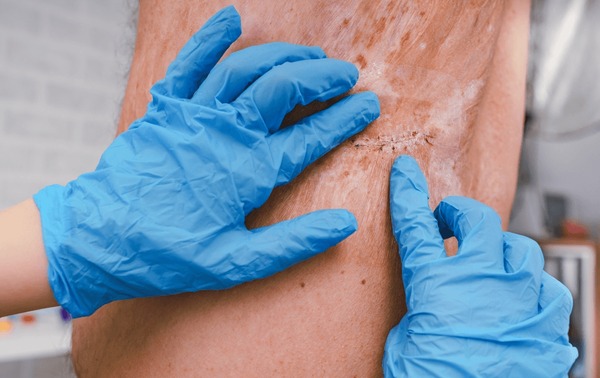Burn Reconstructive Surgery: A Transformative Journey

Severe burns can be life-altering, leaving not just physical scars but emotional and psychological ones as well. However, Burn Reconstructive Surgery in Dubai offers a beacon of hope, providing patients with the opportunity to regain both their appearance and functionality. This transformative procedure is not just about healing physical wounds but about reclaiming confidence and improving the quality of life. In this article, we will explore the various stages and aspects of burn reconstructive surgery, from its initial consultation to the long-term results that can change a patient’s life.
What is Burn Reconstructive Surgery?
Burn reconstructive surgery refers to a set of specialized procedures aimed at restoring the appearance and functionality of the body after significant burn injuries. These injuries can cause severe tissue damage, including the skin, muscles, nerves, and bones. Burn reconstructive surgery addresses both cosmetic and functional concerns, focusing on improving appearance, minimizing scars, and restoring mobility and strength.
The Role of Reconstructive Surgery
The goal of burn reconstructive surgery is to provide a comprehensive solution to burn injuries. While emergency care focuses on survival and initial healing, reconstructive surgery steps in to tackle the aftermath. This surgery is necessary to treat and repair the extensive damage caused by burns, including the following:
- Skin Grafting: Transplanting healthy skin from other areas of the body to cover burned areas.
- Tissue Expansion: Stretching healthy skin to cover larger burn areas.
- Scar Revision: Minimizing and reshaping scar tissue for a smoother, more aesthetic appearance.
- Muscle and Tendon Repairs: Restoring function and movement in areas where muscle or tendons were damaged.
- Nerve Reconstruction: Rebuilding nerve structures to restore sensation and function.
Burn reconstructive surgery is not one-size-fits-all. It is a personalized journey tailored to each patient’s unique needs, with several phases designed to achieve the best possible outcome.
Understanding the Burn Severity and Surgical Approach
Types of Burns and Their Impact
Burns are classified into three primary categories based on their severity:
- First-Degree Burns: Affect only the outer layer of the skin, resulting in redness and pain. These burns generally heal without the need for reconstructive surgery.
- Second-Degree Burns: Affect both the outer and deeper layers of the skin, leading to blisters and swelling. Severe second-degree burns may require reconstructive surgery to manage scarring.
- Third-Degree Burns: Penetrate through all layers of the skin and may extend into deeper tissues, muscles, or bones. These are the most severe burns, often requiring extensive reconstructive surgery to restore appearance and function.
The severity of the burn injury determines the surgical approach, with third-degree burns typically necessitating the most complex and multi-phased reconstruction.
Stages of Burn Reconstructive Surgery
Burn reconstructive surgery is typically performed in stages, often beginning when the patient’s overall health is stabilized. Some common stages of the process include:
- Initial Treatment: The first stage involves treating the burn injury to prevent infection and promote healing. This may include skin grafting or other temporary solutions.
- Reconstructive Surgery: In this phase, a more permanent solution is implemented to restore the burn area, such as skin grafts or tissue expansion.
- Scar Management and Refinement: Once the initial surgery has healed, scar revision techniques may be used to improve the appearance of any remaining scars.
- Functional Rehabilitation: If the burn has affected the muscles, tendons, or nerves, additional surgeries or physical therapy may be necessary to restore function and movement.
Each stage is critical for both physical recovery and emotional healing.
Preparing for Burn Reconstructive Surgery
Consultation with a Specialist
The journey towards burn reconstructive surgery begins with a consultation with a board-certified plastic surgeon specializing in burn care. During this initial consultation, the surgeon will assess the extent of the burn injuries and determine the most appropriate surgical approach. This evaluation will consider several factors, including the following:
- Burn Severity: The depth and size of the burn will guide the surgical plan.
- Location of the Burns: Certain areas of the body, such as the face or hands, may require specialized surgical techniques to restore both function and aesthetics.
- Overall Health: The surgeon will evaluate the patient’s overall health, as certain medical conditions (such as diabetes) can affect the healing process.
- Patient Expectations: It is important for patients to express their goals and concerns, so the surgeon can tailor the treatment to meet their needs.
Pre-Surgical Preparation
Before undergoing surgery, patients will undergo several preparatory steps, including medical evaluations, blood tests, and imaging studies to evaluate the damage caused by the burn injury. Patients will also be advised on how to prepare their body for surgery, which may include stopping smoking or adjusting medications. Mental preparation is just as important, as the process of reconstructive surgery can be both physically and emotionally challenging.
The Burn Reconstructive Surgery Process
Skin Grafting and Tissue Expansion
For extensive burns, skin grafting is often the primary method of covering damaged areas. Skin can be harvested from an area of the body where the skin is healthy and used to cover the burn site. This procedure is often combined with tissue expansion, where a device is placed under healthy skin to gradually stretch it. This technique allows for a larger area of skin to be used for grafting, especially in cases where the burn injury is widespread.
Scar Revision and Aesthetic Restoration
One of the most important aspects of burn reconstructive surgery is the management of scars. Scar revision surgery involves the removal or reshaping of excessive or unattractive scars, often using advanced techniques such as laser therapy or microneedling to smooth the texture. Surgeons may also use fat grafting to restore volume in areas where the skin has become sunken or deformed after the burn.
Muscle and Tendon Repairs
Burn injuries can also affect the underlying muscle and tendon structures, leading to a loss of mobility and function. In such cases, muscle and tendon reconstruction procedures are necessary to restore movement. These surgeries often involve repairing or replacing damaged muscles or tendons, ensuring that the patient can regain full functionality in the affected area.
Nerve Reconstruction
Severe burns can also damage the nerves, leading to sensory loss or paralysis in the affected area. Nerve reconstruction surgery aims to repair or replace the damaged nerves to restore sensation and motor function. This is particularly important for burns that affect the face, hands, or other areas that require fine motor skills.
Post-Surgery Recovery and Care
Pain Management and Healing
After burn reconstructive surgery, patients can expect some pain and discomfort as the body heals. Effective pain management is essential during this period, with medications prescribed to alleviate pain and reduce swelling. Wound care is another crucial aspect of recovery, with regular dressing changes and care instructions provided to prevent infection and support the healing process.
Physical Therapy for Mobility
Burn injuries, particularly those affecting the joints, can lead to limited mobility. Physical therapy plays a critical role in the recovery process, helping patients regain flexibility, strength, and range of motion. Therapy may begin soon after surgery to help prevent joint contractures and improve overall mobility.
Long-Term Scar Management
Scarring is a natural part of the healing process after burn injuries, but it can often be managed and minimized through a combination of treatments. These may include silicone sheets, compression garments, and ongoing laser treatments to smooth and flatten scars over time. Patience is essential, as scars may continue to improve for up to a year or more after surgery.
Emotional and Psychological Recovery
Burn reconstructive surgery goes beyond physical healing. Many patients face emotional and psychological challenges as they adjust to their appearance after the burns. These challenges can include body image issues, post-traumatic stress, and anxiety. It is important for patients to seek psychological support throughout their recovery journey, whether through therapy, support groups, or other forms of mental health care.
Conclusion
Burn reconstructive surgery is a transformative journey that offers hope, healing, and restoration to individuals who have suffered from severe burn injuries. Through a combination of surgical techniques, physical therapy, and psychological support, patients can regain their appearance, functionality, and confidence. The process is long and challenging, but the results can be life-changing, allowing individuals to reclaim their lives after burn injuries.




